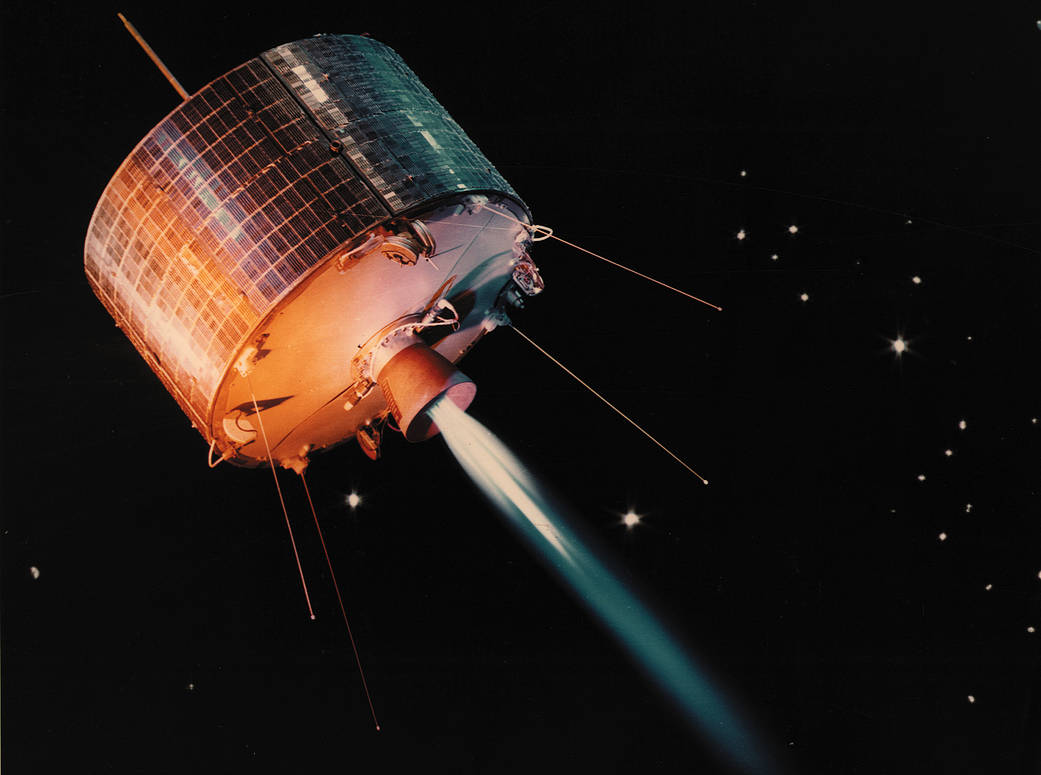
NASA began development of new communication satellites in 1960, based on the hypothesis that geosynchronous satellites, which orbit Earth 22,300 miles (35,900 km) above the ground, offered the best location because the high orbit allowed the satellites' orbital speed to match the rotation speed of Earth and therefore remain essentially stable.
NASA began development of new communication satellites in 1960, based on the hypothesis that geosynchronous satellites, which orbit Earth 22,300 miles (35,900 km) above the ground, offered the best location because the high orbit allowed the satellites’ orbital speed to match the rotation speed of Earth and therefore remain essentially stable over the same spot. Only 17 months after development began, NASA launched Syncom I, but it stopped sending signals a few seconds before it reached its final orbit. Five months later, NASA launched Syncom II, which demonstrated the viability of the system. The next Syncom transmitted live coverage of the 1964 Olympic games in Tokyo to stations in North America and Europe.Image Credit: NASA
























